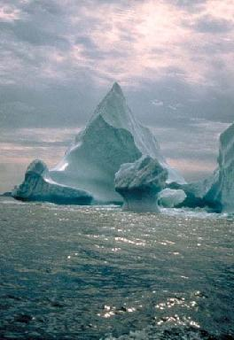NOAA/WDS Paleoclimatology - Anderson and Prell 1993 Oman Upwelling Data Set
This archived Paleoclimatology Study is available from the NOAA National Centers for Environmental Information (NCEI), under the World Data Service (WDS) for Paleoclimatology. The associated NCEI study type is Paleoceanography. The data include parameters of paleoceanography with a geographic location of Arabian Sea. The time period coverage is from 300000 to 0 in calendar years before present (BP). See metadata information for parameter and study location details. Please cite this study when using the data.
Dataset Citation
- Cite as: Anderson, D.M.; Prell, W.L. (2003-11-14): NOAA/WDS Paleoclimatology - Anderson and Prell 1993 Oman Upwelling Data Set. [indicate subset used]. NOAA National Centers for Environmental Information. https://doi.org/10.25921/2djs-v511. Accessed [date].
- Please refer to Credit tab for full citation information.
Dataset Identifiers
- doi:10.25921/2djs-v511
- noaa-ocean-8694
- NCEI DSI 1200_02
- NCEI DSI 1200_01
ISO 19115-2 Metadata
noaa-ocean-8694
| Search Data |
|
| Download Data |
|
| Distribution Formats |
|
| Ordering Instructions | Contact NCEI for other distribution options and instructions. |
| Distributor |
NOAA National Centers for Environmental Information ncei.info@noaa.gov |
| Dataset Point of Contact |
NOAA National Centers for Environmental Information ncei.info@noaa.gov |
| Dataset Point of Contact | Data Center Contact NOAA World Data Service for Paleoclimatology 828-271-4800 paleo@noaa.gov |
| Coverage Description | Date Range: 300000 cal yr BP to 0 cal yr BP; |
| Time Period | -298050 to 1950 |
| Spatial Bounding Box Coordinates |
West: 57.60935
East: 57.60935
South: 18.0513
North: 18.0513
|
| Spatial Coverage Map |
| General Documentation |
|
| Associated Resources |
|
| Publication Dates |
|
| Data Presentation Form | Digital table - digital representation of facts or figures systematically displayed, especially in columns |
| Dataset Progress Status | Complete - production of the data has been completed |
| Data Update Frequency | Data update frequency not available |
| Supplemental Information | ABSTRACT SUPPLIED BY ORIGINATOR: In the northwest Arabian Sea upwelling occurs each summer, driven by the strong SW monsoon winds. Upwelling results in high biological productivity and a distinctive assemblage of plankton species in the surface waters off Oman that are preserved in the sediments along the Oman continental margin, creating a geologic record of monsoon-driven upwelling. Sediments recovered from the Oman continental margin during Ocean Drilling Program leg 117 provide an opportunity to examine how upwelling has varied during the late Quaternary, spanning a longer interval than piston cores recovered prior to the ODP cruise. Variations in foraminifer shell accumulation and in the relative abundance of Globigerina bulloides indicate dominant cycles of variation at 1/100 kyr, the dominant frequency of glacial-interglacial variations, and at 1/23 kyr, the frequency of precessionally driven cycles in seasonal insolation. The strongest monsoon winds (indicated by increased upwelling) occurred during interglacial times when perihelion was aligned with the summer solstice, an orbital change that increased the insolation received during summer in the northern hemisphere. During glacial times upwelling was reduced, and although the precessional cycles were still present their amplitude was smaller. At both frequencies the upwelling cycles are in phase with minimum ice volume, evidence that glacial-interglacial climate changes also include changes to the climate system that influence the low-latitude monsoon. We attribute the decrease in the monsoon winds observed during glacial times to changes in bare land albedo over Asia and/or to changes in the areal extent and seasonal cycle in Asian snow cover that decrease the summer land-sea temperature contrast. Other mechanisms may also be involved. These new upwelling time series differ substantially from previous results, however the previous work relied on cores located farther offshore where upwelling is less intense and other physical mechanisms become important. Our results support the observations derived from atmospheric general circulation models of the atmosphere that indicate that both glacial boundary conditions, and the strength of summer insolation are important variables contributing to cycles in the monsoon winds during the late Quaternary. |
| Purpose | Records of past climate and ocean circulation derived from marine sediments. Parameter keywords describe what was measured in this dataset. Additional summary information can be found in the abstracts of papers listed in the dataset citations. |
| Dataset Citation |
|
| Cited Authors |
|
| Originators |
|
| Publishers |
|
| Theme keywords |
Global Change Master Directory (GCMD) Science Keywords
|
| Data Center keywords |
Global Change Master Directory (GCMD) Data Center Keywords
|
| Place keywords |
|
| Use Constraints |
|
| Access Constraints |
|
| Fees |
|
Last Modified: 2023-12-07
For questions about the information on this page, please email: ncei.info@noaa.gov
For questions about the information on this page, please email: ncei.info@noaa.gov

